Control your breathing for an efficient (and enjoyable) experience in the water.
Regardless of a person’s athletic background in other sports, the first leg of a triathlon—the swim—can pose a number of challenges (perceived and real) to the inexperienced or non-swimmer. In this five-part series, swimming coach and former professional triathlete, Sara McLarty will take aspiring triathletes step-by-step through the process of becoming a confident and capable swimmer. Are cycling and running “meh” to you? That’s okay, this series of “learn to swim” posts isn’t just for triathletes; it’s perfect for anyone who is new to swimming (or just getting back into it)!

Fear Itself … and Some Other Stuff
There are many parts of the triathlon swim that may cause anxiety and fear among inexperienced swimmers. Most triathlons take place in open water like a lake, ocean, or river, (there are also events that utilize the swimming pool for the first leg of the race!). In open water, swimmers must be aware that there will be limited visibility in the murky water, no lane ropes or pool edges to cling to, no solid bottom to stand on, and the wind might whip up a few ripples on the surface, splashing your face as you turn to breathe.
Congestion, and even (unintentional) physical contact, can also make the swim an unnerving experience for beginner triathletes. If you’ve watched a triathlon live or on television, you might know that the most races start with “waves,” or groups, of participants. For example, all of the participants in a single age category (eg: Men 40-44 or Women 30-39) will start together. This type of start usually results in a few minutes—two-hundred yards or so—of disorder, as everyone tries to find some space and get into their stroke rhythm. Aside from the start, areas near turn buoys can also become crowded, as multiple waves of people converge to take the shortest distance around the course.
Relax … and Practice
These are just some of the reasons why learning to swim and generally being comfortable in the water are important before starting a triathlon. There is a big difference between splashing in the waves at the beach and swimming a quarter-mile beyond the breakers. The first step is to get in the water and practice, practice, practice. Time spent in the pool will improve your swim stroke and time spent in open water will help with the psychological preparation for race day.
Just Breathe
Before you can relax in the water (and then swim fast), you must learn how to control your breathing so that easy swimming does not leave you gasping after one lap—or length—in the pool. Right now, as you sit at your computer, imagine how you inhale and exhale while cycling and running, or during other activities (rowing?). It should be a short but steady inhale followed by a short and steady exhale with no pausing, no holding your breath, and no gasping for air. That’s exactly how breathing should be while swimming.
Related: Ironman 70.3 Oceanside Swim Course Will Include Beach Start and Open Water
Make the Water Your Friend
Get initiated by jumping into the water and then holding onto the edge of the pool. Perform a couple of slow ‘bobs’ where you inhale through your mouth when your head is above water and then exhale out your nose and mouth underwater. As soon as your face goes under, start a steady and continuous exhalation as you slowly count to three. Lift your head back out of the water, take a quick inhalation, and return under the water for another exhalation.
The feeling of being “out of breath” or gasping, is caused by holding your breath and letting the carbon dioxide build up in your lungs. This feeling rarely occurs on dry land because we are never forced to hold our breath. After bobbing at the edge of the pool, swim a lap using the same breathing technique. Try to find a good rhythm by inhaling during every third stroke. This breathing pattern is optimum because you will breathe on both sides of your body. (Bilateral-breathing also results in a balanced stroke that will be straight and even.)
As you become more comfortable and relaxed with a steady inhale and exhale, you will be able to complete more laps of the pool without stopping to catch your breath. This is a critical element to swimming comfortably, continuously, and for open-water swimming and even triathlons, because there are very few places to stop during an event. If you do start gasping, roll onto your back to take a few deep breaths, regain your composure, and then roll onto your stomach and continue swimming.
The following workouts (below) are designed for a beginner swimmer who is training for their first triathlon in the open water. There are three workouts for each week this first month (12 total) and each should take between 30-45 minutes to complete. When you go to the pool during this month, focus on breathing and relaxing. These workouts are part of your ‘base’ yardage and should only be swum fast if there are explicit directions. Otherwise, keep it slow and steady with a focus on breathing and good technique.—Sara McLarty
Sara McLarty is a swimming coach with Swim Like a Pro, based in Clermont, Florida. Formerly, she was a professional triathlete known, of course, for being first out of the water (and her perpetual smile).
WEEK #1
Workout #1 (600 Total Yards)
- 100 warm-up swim
:60 seconds rest
- 6 x 25 (2 kick, 2 pull, 2 swim)
with :30 seconds rest between each 25
- 100 swim
:60 seconds rest
- 6 x 25 (2 kick, 2 pull, 2 swim)
with :30 seconds rest between each 25
- 100 cool down swim
Workout #2 (700 Total Yards)
- 150 warm-up swim
:60 seconds rest
- 4x50 swim
with :30 seconds rest between each 50
- 8x25 swim
-With :30 seconds rest between each 25
-Count the number of strokes you take on #1
-Try to take one less stroke on #2, one less on #3, one less on #4
start over and repeat for #’s 5-8
- 150 cool down swim
Workout #3 (800 Total Yards)
- 100 warm-up swim
:60 seconds rest
- 4x75 (25 kick/50 swim)
With :45 seconds rest between each 75
- 4x75 pull
With :30 seconds rest between each 75
- 100 cool down swim
WEEK #2
Workout #1 (800 Total Yards)
- 200 warm-up swim
- 6x50 (25 kick/25 swim)
With :30 seconds rest between each 50
- 8x25 swim
-With :30 seconds rest between each 25
-Swim #1 easy, swim #2 a little bit faster, #3 a little faster, #4 faster
-Start over and repeat for #’s 5-8
- 100 cool down
Workout #2 (800 Total Yards)
- 100 warm-up swim
:60 seconds rest
- 4x50 kick with fins
With :30 seconds rest
- 4x50 swim
With :30 seconds rest
- 4x50 pull
With :30 seconds rest
- 100 cool down swim
Workout #3 (850 Total Yards)
- 200 warm-up swim with fins
:60 seconds rest
- 200 swim
:60 seconds rest
- 200 pull
:60 seconds rest
- 200 swim
:60 seconds rest
- 50 cool down swim
WEEK #3
Workout #1 (800 Total Yards)
- Warm-up: 100 swim, 100 kick, 100 pull, 100 swim
:30 seconds rest between each 100
- 12x25 swim
-With :30 seconds rest between each 25
-Swim #1 easy, swim #2 a little bit faster, #3 a little faster, #4 faster
-Start over and repeat for #’s 5-8 and #’s 9-12
- 100 cool down swim
Workout #2 (900 Total Yards)
- 200 warm-up swim
- 4x75 swim
-With :45 seconds rest
-Swim the middle 25 on your back (backstroke)
- 3x100 pull
With :60 seconds rest
- 100 cool down swim
Workout #3 (900 Total Yards)
- 100 warm-up swim
With :60 seconds rest
- 4x25 kick
With :40 seconds rest
- 3x50 pull
With :20 seconds rest
- 2x100 swim
With :60 seconds rest
- 3x50 pull
With :40 seconds rest
- 4x25 kick
With :20 seconds rest
- 100 cool down
WEEK #4
Workout #1 (800 Total Yards)
- 200 warm-up swim with fins
- 6x50 swim
-With: 30 seconds rest
-Count number of strokes on #1, try for two fewer on #2, and fewer on #3
-Start over and repeat on #’s 4-6
- 4x50 swim
w/:60 seconds rest
First 25 is easy, second 25 is fast
- 100 cool down swim
Workout #2 (900 Total Yards)
- 100 warm-up swim
:60 seconds rest
- 200 swim
:90 seconds rest
- 300 swim
2:00 minutes rest
- 200 swim
:90 seconds rest
- 100 cool down swim
Workout #3 (900 Total Yards)
- 100 warm-up swim
:60 seconds rest
- 6x50
With :30 seconds rest
25 kick/25 swim
- 4x100 pull
With :60 seconds rest
- 100 cool down swim
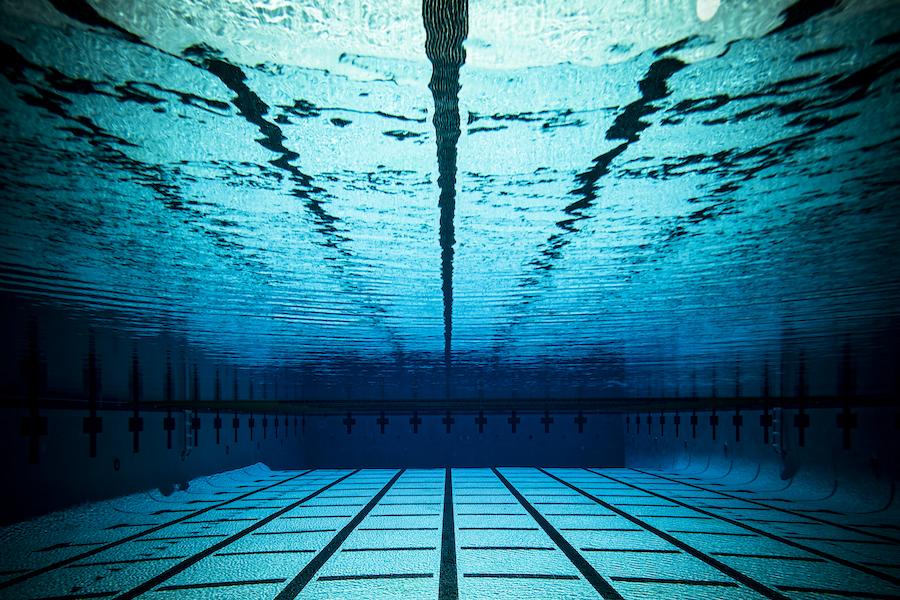
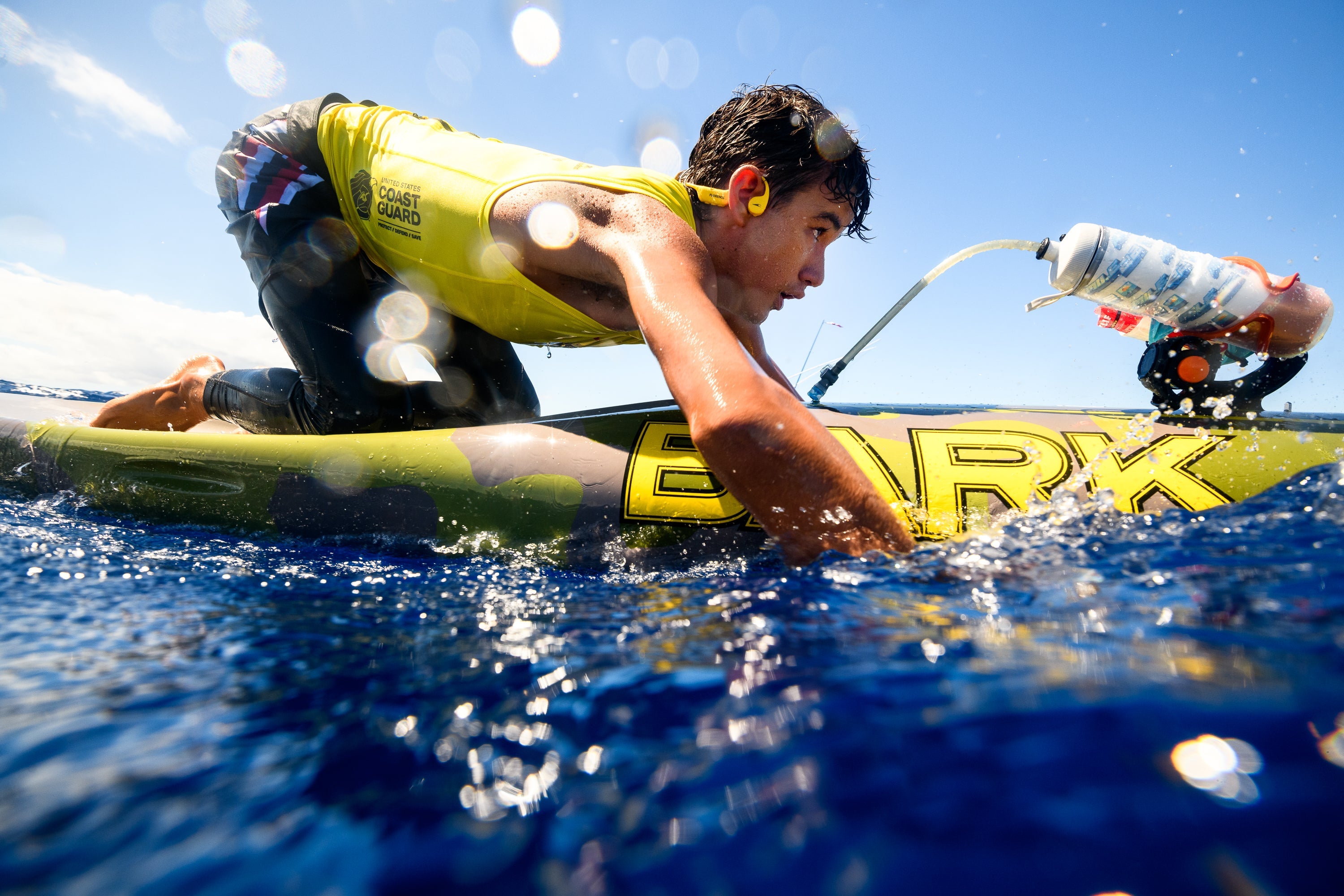
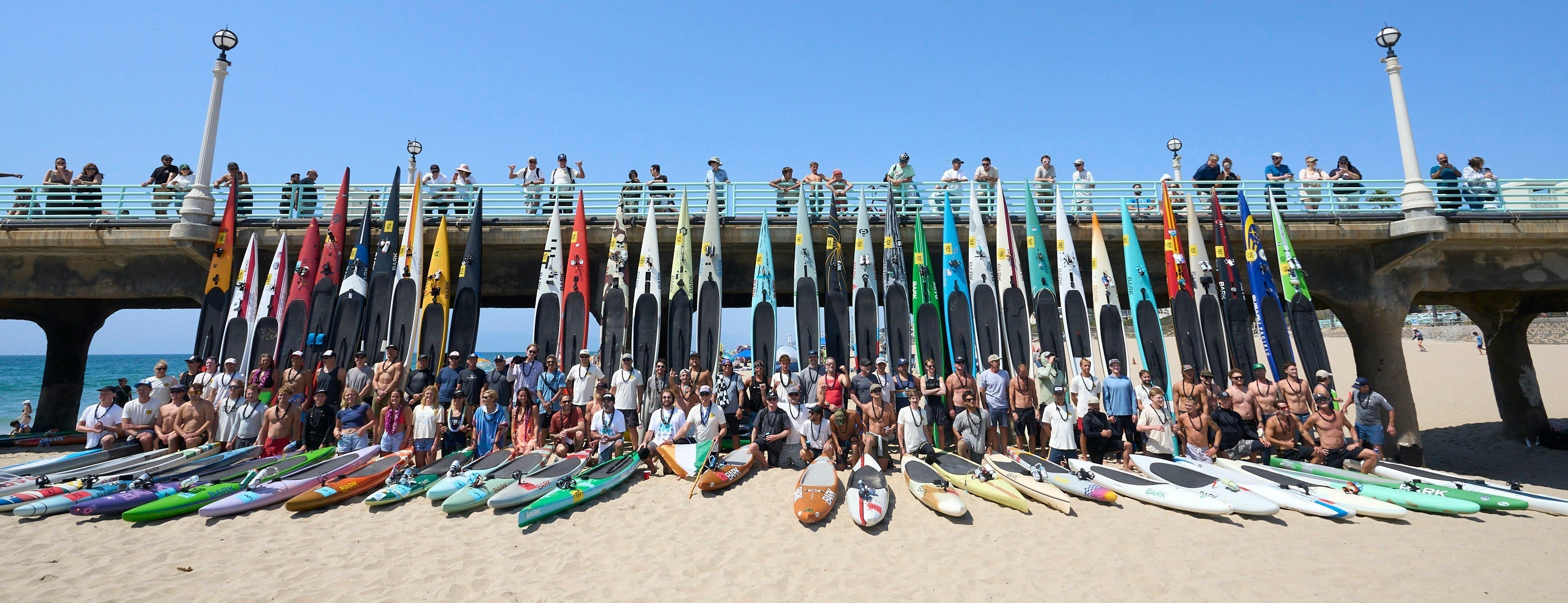
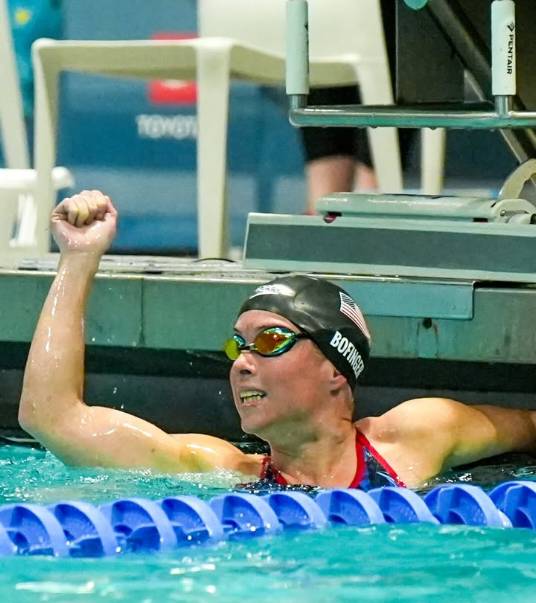
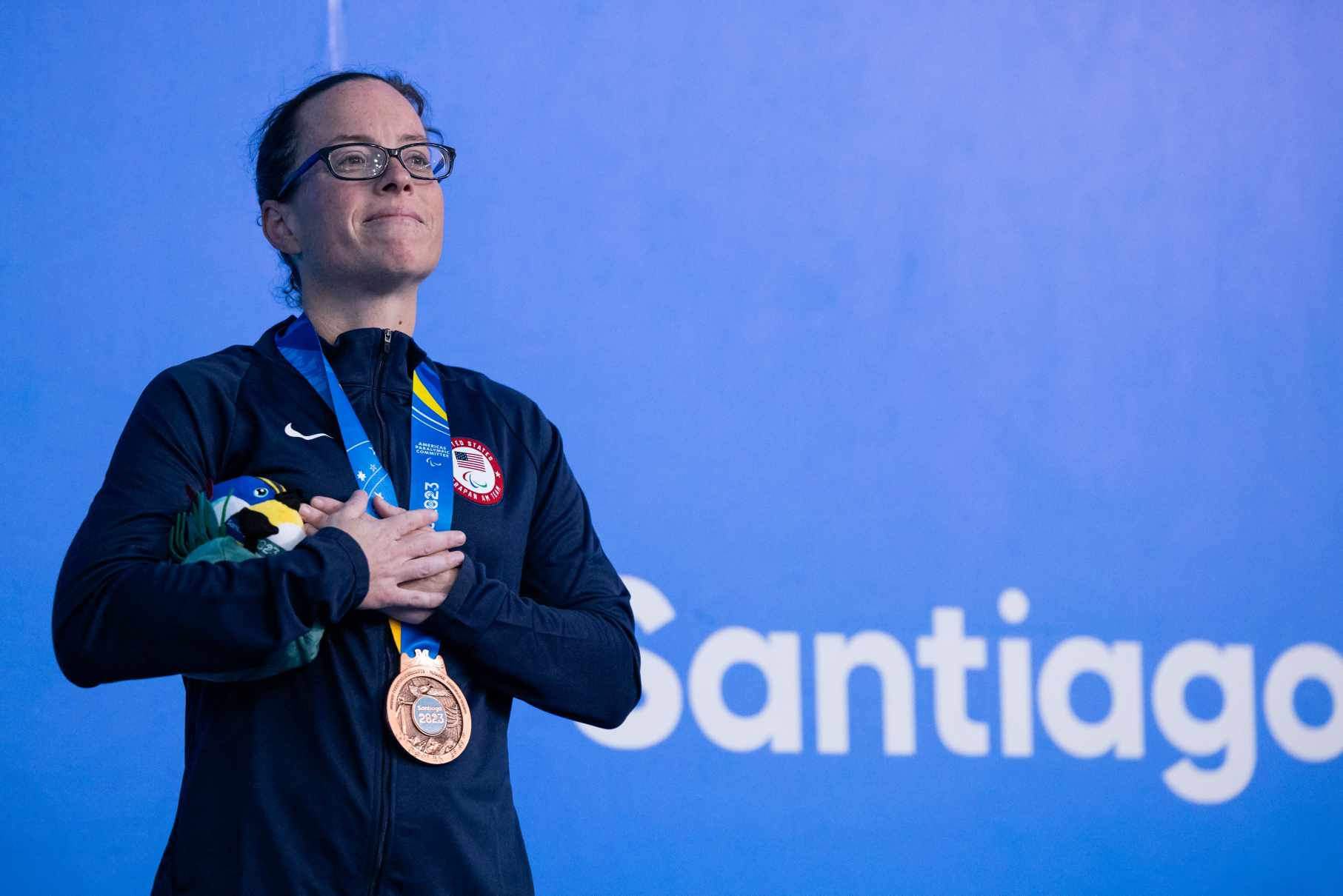
Share:
Tech Hack: How to Connect Two FLOAT Bluetooth Speakers
Ironman Wants More Challenging Oceanside Event